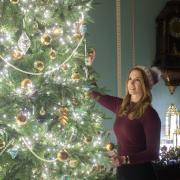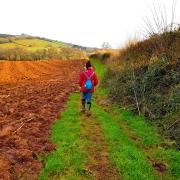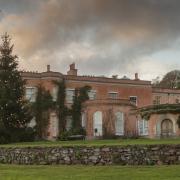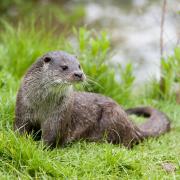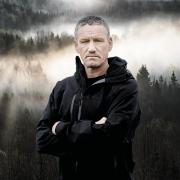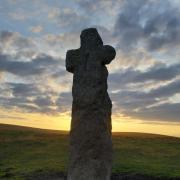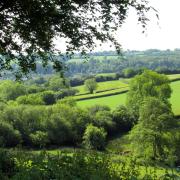We are lucky to live in a county which has hills and steep-sided valleys which have made it unsuitable for the large scale intensification of agriculture seen in flatter parts of the country. We still have a wonderful network of hedgerows and relatively small fields as well as large areas of wild landscape such as Dartmoor, Exmoor and the coastal fringe. But farming has a massive impact on wildlife and given that more than 80 per cent of Devon is farmed it is clear that we need to be conscious of how farming and wildlife can live together.
![The cirl bunting is on the road to recovery thanks to conservation groups and farmers]() The cirl bunting is on the road to recovery thanks to conservation groups and farmers (Image: David Chapman) Along the south coast of Devon we have a population of one of the more interesting farmland bird species in the UK. The cirl bunting was once common across much of southern England but its population was severely impacted by the intensification of agriculture in the middle of the last century. By the 1980s the entire distribution of cirl buntings in Britain became confined to the South Hams and there were only about 100 pairs left. Once research had been done into the requirements of the cirl bunting various conservation groups, led by the RSPB, stepped in with a plan to work alongside farmers to help the species recover. From the 1990s the population of these lovely birds began to recover and in 2016 the target of over 1,000 pairs was met. Some good places to look for them include Prawle Point, Labrador Bay and Broadsands. The yellowhammer is another farmland bird quite similar in appearance to the cirl bunting but more widespread across the county, it is well-known for its call which we remember by the mnemonic ‘a little bit of bread and no cheese’.
The cirl bunting is on the road to recovery thanks to conservation groups and farmers (Image: David Chapman) Along the south coast of Devon we have a population of one of the more interesting farmland bird species in the UK. The cirl bunting was once common across much of southern England but its population was severely impacted by the intensification of agriculture in the middle of the last century. By the 1980s the entire distribution of cirl buntings in Britain became confined to the South Hams and there were only about 100 pairs left. Once research had been done into the requirements of the cirl bunting various conservation groups, led by the RSPB, stepped in with a plan to work alongside farmers to help the species recover. From the 1990s the population of these lovely birds began to recover and in 2016 the target of over 1,000 pairs was met. Some good places to look for them include Prawle Point, Labrador Bay and Broadsands. The yellowhammer is another farmland bird quite similar in appearance to the cirl bunting but more widespread across the county, it is well-known for its call which we remember by the mnemonic ‘a little bit of bread and no cheese’.
![The red-legged partridge can be seen around arable fields in Devon]() The red-legged partridge can be seen around arable fields in Devon (Image: David Chapman) Partridges are classic farmland birds, found particularly around arable crops. Our native grey partridge is increasingly rare in Devon but the introduced red-legged partridge is seen in good numbers.
The red-legged partridge can be seen around arable fields in Devon (Image: David Chapman) Partridges are classic farmland birds, found particularly around arable crops. Our native grey partridge is increasingly rare in Devon but the introduced red-legged partridge is seen in good numbers.
Starlings are still common in autumn and winter and can gather in large flocks on farmland where they search for leatherjackets and worms, often associating with cattle which is exactly where we might come across one of the county’s more recent colonisers, cattle egrets.
![Roe deer are shy but can be found on farmland in Devon]() Roe deer are shy but can be found on farmland in Devon (Image: David Chapman) Various mammals are associated with farmland. We have two lagomorphs: brown hare which is not as common as it once was and the rabbit which is widespread. Of the deer species it is the roe deer that is most likely to be seen on farmland, either bounding boldly through arable crops or stealthily browsing hedgerows. Farmland foxes (2) are more often heard than seen, it’s striking how nervous they are compared to their urban counterparts..
Roe deer are shy but can be found on farmland in Devon (Image: David Chapman) Various mammals are associated with farmland. We have two lagomorphs: brown hare which is not as common as it once was and the rabbit which is widespread. Of the deer species it is the roe deer that is most likely to be seen on farmland, either bounding boldly through arable crops or stealthily browsing hedgerows. Farmland foxes (2) are more often heard than seen, it’s striking how nervous they are compared to their urban counterparts..
See more of David’s photography at davidchapman.org.uk
![Farmland seen from Great Torrington]() Farmland seen from Great Torrington (Image: David Chapman)
Farmland seen from Great Torrington (Image: David Chapman)








